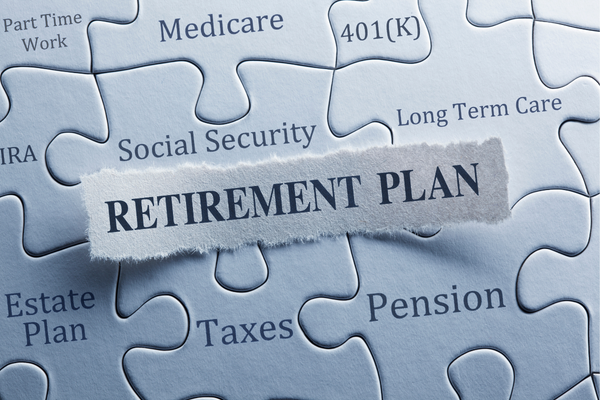What is estimating your Social Security benefits?
Estimating your Social Security benefits is particularly important when you are planning for retirement, although you may be interested in estimating survivor benefits or disability benefits as well. When planning for retirement, you should neither overlook nor overstate the value of your Social Security benefits. Predicting the future of Social Security is difficult, because to keep the system solvent, some changes must be made to it. The younger and wealthier you are, the more likely that these changes will affect you. But even if you retire in the next few years, remember that Social Security was never meant to be the sole source of income for retirees. As President Dwight D. Eisenhower said: “The system is not intended as a substitute for private savings, pension plans, and insurance protection. It is, rather, intended as the foundation upon which these other forms of protection can be soundly built.” Estimating your Social Security benefits now will not only help you plan an effective long-term retirement strategy, but it can also help you understand what benefits might protect your family if you were to die or become disabled.
Obtaining a benefits estimate
You can estimate your retirement benefit online based on your actual earnings record using the Retirement Estimator calculator on the Social Security website, ssa.gov. You can create different scenarios based on current law that will illustrate how different earnings amounts and retirement ages will affect the benefit you receive. Other benefit calculators are also available that can help you estimate disability and survivor benefits. You can also sign up to view your Social Security Statement that contains a detailed record of your earnings, as well as estimates of retirement, survivor, and disability benefits. If you’re not registered for an online account and are not yet receiving benefits, you’ll receive a statement in the mail every year, starting at age 60.
Understanding how your benefit amount is calculated
Your Social Security benefits will be based on your average lifetime earnings, expressed as your primary insurance amount (PIA). Calculating your PIA is complicated because some factors used in the benefit formula change annually. Instead of calculating it yourself, it’s easiest to obtain a benefit estimate directly from the SSA (see preceding section).
However, knowing how your PIA is calculated may be useful in benefit planning. Currently, the two PIA calculation methods most frequently used are:
- The simplified old-start benefit method–This method is used if age 62, disability, or death occurred prior to 1979. It averages actual (not indexed) earnings and uses a table to calculate the PIA.
- The wage indexing method–This method has been used since 1979. Indexing earnings is a way of adjusting them to reflect changes in wage levels throughout years of employment. This ensures that your benefits reflect increases in the standard of living. In general, the wage indexing method calculates your PIA by indexing your lifetime earnings up to and including the year you turn 59. Then, your highest earnings for a specific number of years (usually 35) are averaged and a benefit formula is applied to this figure to calculate the PIA.
Two other benefit computation methods are less frequently used:
- “Special minimum” benefit tables are used sometimes to compute benefits payable to some individuals who have long periods of low earnings and who have at least 11 years of coverage.
- Flat-rate benefits are provided to workers (and to their spouses or surviving spouses) who became age 72 before 1969 and who were not insured under the usual requirements.
How to calculate your PIA using the wage-indexing method
The wage indexing method can be used to calculate retirement, survivor’s, and disability benefits. However, the method used to calculate disability benefits is slightly different. The following discussion applies only to calculating your PIA for retirement and death benefits.
Follow these steps to calculate your PIA:
- Count the number of years elapsed between 1951 (or the year you turned 22, if later) and the year you turned 61. If you were born in 1929 or later, this number will be 40.
Example(s): Peter retired from his job in 1992. He was 62. He turned 22 in 1952, so count the number of years between 1952 and 1991 (the year he turned 61). Forty years have elapsed.
- Use the number of elapsed years to determine the number of benefit computation years. To do this, subtract five from the number of computation elapsed years. This figure will be used to calculate your average indexed monthly earnings (AIME). If you were born in 1929 or later, this number will be 35.
Example(s): Peter’s computation elapsed year figure is 40. 40-5=35. So, Peter’s benefit computation year figure is 35.
- Use your earnings record to calculate your indexed earnings. To do this, use the appropriate table to determine what the indexing average wage was or will be in the year you turn 60. Then, look to see what the indexing average wage was in the year you are indexing. These figures become part of an indexing ratio applied to each year of earnings starting with 1951 and ending with the year you turn 59. (Earnings before 1951 are generally disregarded. Earnings in the year you turn 60 (your indexing year) and earnings in all later years are considered in calculating your PIA, but they are not indexed.) The indexing ratio can be expressed as the actual earnings in the year being indexed multiplied by the indexing average wage in the year you turned 60 divided by the indexing average wage in the year being indexed. The result will equal your indexed earnings for the year being indexed.
Example(s): Peter started working in 1951 and retired in 1992. For each year starting with 1951 and ending with 1989 (the year he turned 59), calculate his indexed earnings. His indexing year is 1990 (the year he turned 60). For example, Peter’s earnings in 1965 were $2,000. In 1965, the indexing average wage was $4,658.72. In 1990, the indexing average wage was $21,027.98. Calculate his 1965 indexed earnings:
$2,000 multiplied by $21,027.98 divided by $ 4,658.72 = $9,027.36
Tip: Actual earnings are earnings credited to an individual’s Social Security record. However, each year’s actual earnings are subject to a maximum earnings limit. If your earnings for the year you are indexing exceed the maximum limit, then you must substitute the maximum earnings limit amount for your actual earnings amount in the ratio.
Example(s): In 1965, the maximum earnings limit was $4,800. Had Peter’s actual earnings exceeded that amount, he would have replaced his actual earnings figure in the ratio with $4,800 to calculate his indexed earnings for 1965.
Once you have indexed your earnings for each year you have worked before age 60, you will be able to use those figures to calculate your average indexed monthly earnings (AIME).
- Calculate your AIME by selecting your highest earnings for the benefit computation years (including any earnings not subject to indexing). Add these up and divide by the total number of months elapsed during these years.
Example(s): Peter had 39 years of indexed earnings and two years of earnings (1990 and 1991) not indexed but included in the calculation. Select his 35 highest earning years. The earnings for these years total $950,000. Divide this figure by 420 months (35 x 12). His AIME is $2261.90.
- Calculate the PIA for the year you attain age 62 by applying percentages to certain dollar amounts of the AIME. The percentages are fixed, but the dollar amounts (called bend points) are adjusted each year for inflation.
Example(s): Peter attained age 62 in 1992. His PIA would be calculated using 1992 bend points–90 percent of the first $387 of his AIME, and adding 32 percent of the AIME in excess of $387 through $2,333, and adding 15 percent of the AIME in excess of $2,333. So, Peter’s PIA is calculated to be the sum of $348.30 (90 percent of $387) plus $599.65 (32 percent of $1,873.90) or $947.95, rounded to the next lower multiple of 10 cents, $947.90.
Bend points make calculating your future PIA difficult because the bend points for each year are only published on or before November 1 of the preceding year. For 2021, the bend points are $996 and $6,002.
- Adjust your PIA to account for changes in the cost-of-living allowance (COLA) yearly.
Example(s): If Peter’s PIA was $947.90 when he retired in October 1992, then his PIA was adjusted for COLA in December 1992, and his January 1993 benefit check reflected the change.
Using your PIA to determine your benefit amount
Once the PIA has been calculated, all your benefits (and those of your family members who are dependent upon your Social Security record) will be based on this figure. Your PIA is the maximum benefit that you could receive once you become eligible.
Your maximum benefit may be payable if:
- You retire at full retirement age
- You are a widow or widower who is at least full retirement age
- You are a disabled worker
In other circumstances, the benefits that you receive will be a certain percentage of your maximum benefit. For example, if you elect to receive early retirement benefits, your maximum benefit will be reduced by a certain percentage for each month of early retirement. If you or your family members are eligible for reduced benefits, the reduction will be expressed as a percentage of your PIA.
Example(s): Mr. Jones retired at age 66 (his full retirement age) after working for many years. His PIA was determined to be $1,176. He receives the maximum retirement benefit (100 percent of his PIA) so his monthly benefit check is $1,176. His wife retired at age 66 as well (her full retirement age). Since her own PIA was less, she decided to base her retirement income on her husband’s PIA. She is entitled to 50 percent of his PIA, so she receives a monthly benefit check of $588.
The following chart summarizes the relationship between your PIA and your eventual benefits:
Factors that can increase or decrease your benefit
Early retirement
If you elect to receive retirement benefits early (before full retirement age), your benefit will be reduced proportionately. You can elect to receive retirement benefits as early as age 62. For each month of early retirement, your total benefit will be reduced by 5/9 of 1 percent, up to 36 months, and by 5/12 of 1 percent thereafter. For example, if you elect to receive retirement benefits at age 62 and your full retirement age is 66, then you would receive approximately 25 percent less each month than you would at age 66.
Delayed retirement
If you delay receiving retirement benefits past full retirement age, you will receive a higher benefit when you retire. Late retirement may increase your average earnings (which may, in turn, increase your benefit). You will also receive a special delayed retirement credit. This credit is figured as a percentage of your Social Security benefit and is paid in addition to your regular benefit amount. It does not affect your PIA upon which your benefit is based.
This credit varies depending on the year in which you were born and how many months or years after full retirement age you retire (up to the maximum age of 70). For example, if your full retirement age is 67, you will earn an extra 8 percent of your benefit for every year you delay retirement up to age 70. This means that if you delay receiving your retirement benefit until age 70, your benefit payment will be 24 percent greater than it would have been if you began receiving retirement benefits at age 67.
Earnings during retirement
Any income you earn after you retire must be reported to the Social Security Administration and may temporarily reduce your retirement benefit if you have not yet reached full retirement age. However, some of your annual earnings are exempt and won’t affect your benefit.
Simultaneous benefits
Occasionally, you may be entitled to receive benefits based not only on your earnings record, but on someone else’s as well. This often happens when a married couple retires.
Example(s): Mr. Jones is not planning on retiring and receiving Social Security retirement benefits until he is 68. His PIA is $1,176. His wife, who is 63, wants to retire now, but she can’t begin receiving a spouse’s retirement benefit until her husband begins receiving his retirement benefits. However, since she is already over the age of 62, she can receive retirement benefits based on her own PIA. Her benefit, adjusted for early retirement, will be $400. Later, when her husband retires, she can receive her own retirement benefit and a spouse’s benefit of $188, the difference between her own worker’s benefit ($400) and the spouse’s benefit she would have received based on 50 percent of her husband’s PIA ($588).
A family maximum benefit applies
Your family may receive benefits based on your earnings record. There is, however, a limit to the amount of monthly benefit that can be based on an individual’s Social Security record. The limit varies but generally ranges from 150 to 180 percent of your PIA. Benefits to family members may be reduced if they exceed the family maximum. The formula used to compute the family maximum is similar to that used to compute the PIA.
If you are interested in our Social Security planning options, learn more here! We understand that retirement planning can be daunting, and we are here to make it easier for you. Our newsletter is a great way to stay up-to-date with our latest offerings and get helpful retirement planning tips. Signing up is easy; click here. We appreciate your interest in our services and look forward to helping you retire better!
Broadridge Investor Communication Solutions, Inc. prepared this material for use by Social Security Benefit Planners, LLC.
Broadridge Investor Communication Solutions, Inc. does not provide investment, tax, legal, or retirement advice or recommendations. The information presented here is not specific to any individual’s personal circumstances. To the extent that this material concerns tax matters, it is not intended or written to be used, and cannot be used, by a taxpayer for the purpose of avoiding penalties that may be imposed by law. Each taxpayer should seek independent advice from a tax professional based on individual circumstances. Social Security Benefit Planners, LLC provide these materials for general information and educational purposes based upon publicly available information from sources believed to be reliable — we cannot assure the accuracy or completeness of these materials. The information in these materials may change at any time and without notice.
Social Security Benefit Planners, LLC and its affiliates are in no way associated with or approved, endorsed, or authorized by the Social Security Administration.

 What if your Social Security account was created before September 18, 2021?
What if your Social Security account was created before September 18, 2021?





 and the political slant, Social Security has been described as everything from a program in need of some adjustments to one in crisis requiring immediate, drastic reform.
and the political slant, Social Security has been described as everything from a program in need of some adjustments to one in crisis requiring immediate, drastic reform.













